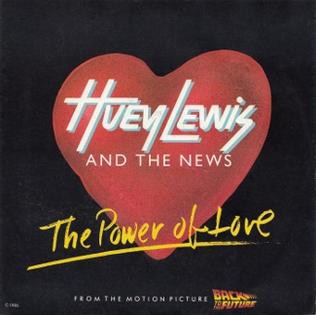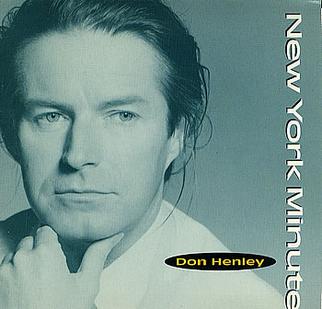 Michael Jackson’s “Beat It” stands as one of the most iconic songs of the 1980s and arguably the definitive moment when pop music boldly embraced the raw energy of rock. Released in 1983 as part of the legendary album Thriller, “Beat It” shattered genre boundaries, delivering a powerful message of peace wrapped in an electrifying musical package. This track not only helped solidify Michael Jackson’s status as the King of Pop but also transformed the landscape of popular music by bridging the worlds of pop, rock, and dance in a way that had never been done before.
Michael Jackson’s “Beat It” stands as one of the most iconic songs of the 1980s and arguably the definitive moment when pop music boldly embraced the raw energy of rock. Released in 1983 as part of the legendary album Thriller, “Beat It” shattered genre boundaries, delivering a powerful message of peace wrapped in an electrifying musical package. This track not only helped solidify Michael Jackson’s status as the King of Pop but also transformed the landscape of popular music by bridging the worlds of pop, rock, and dance in a way that had never been done before.
From the opening drumbeat to the unforgettable guitar riffs, “Beat It” commands attention. The song’s aggressive rhythm and urgent vocals evoke a sense of tension and confrontation, perfectly matching the lyrical theme of avoiding violence and choosing courage over fear. Produced by Quincy Jones and co-written by Jackson himself, “Beat It” combines a pulsating rock groove with synth-driven pop elements, creating a sound that is both accessible and edgy. It was a daring move for a pop star primarily known for his soulful voice and dance moves to dive so deeply into rock territory, yet Jackson did so with effortless cool.
One of the defining features of “Beat It” is the legendary guitar solo performed by Eddie Van Halen. His electrifying solo injects the track with a burst of adrenaline and authenticity, adding rock credibility that elevated the song beyond typical pop fare. Van Halen’s blistering solo is concise yet impactful, perfectly complementing the song’s urgent mood without overshadowing Jackson’s vocals. This collaboration between a pop icon and a rock guitar virtuoso was groundbreaking, symbolizing a new era of genre-blurring and musical experimentation.
Lyrically, “Beat It” delivers a message of nonviolence and self-respect. The song narrates a story of avoiding senseless fights and walking away from danger rather than escalating it. Jackson’s voice carries a mix of assertiveness and empathy as he implores listeners to “beat it” — not in a celebratory sense, but as a call to refuse violence and embrace strength through restraint. This theme was particularly resonant in the early 1980s, a period marked by urban unrest and cultural tension. “Beat It” became an anthem for peace wrapped in the gritty language of toughness, making it relatable and powerful across diverse audiences.
The music video for “Beat It” played a crucial role in the song’s cultural impact. Directed by Bob Giraldi, the video dramatizes gang conflicts through choreographed dance battles, turning violent confrontations into artistic expression. Jackson’s signature moves, combined with the theatrical staging of rival gangs coming together through dance, sent a hopeful message of unity and understanding. The video’s cinematic quality and compelling narrative helped push MTV into more diverse programming, breaking down racial barriers on a platform that had been criticized for its limited representation.
“Beat It” was a massive commercial success, topping the Billboard Hot 100 chart and becoming one of Michael Jackson’s most recognizable songs. It won two Grammy Awards in 1984 — Record of the Year and Best Male Rock Vocal Performance — marking Jackson’s first Grammy wins and underscoring the song’s critical acclaim. The track’s cross-genre appeal helped Thriller become the best-selling album of all time, a testament to Jackson’s ability to connect with audiences worldwide.
The production of “Beat It” reveals a meticulous attention to detail and a perfect marriage of musical styles. Quincy Jones’s expertise shines through in the song’s crisp drum patterns, layered synths, and balanced mix, allowing each instrument and vocal line to stand out without clutter. The rhythm section drives the song forward relentlessly, while the background vocals add texture and depth. Jackson’s vocal delivery is dynamic, switching from a tense, narrative style in the verses to an explosive chorus that emphasizes the urgency of the message.
“Beat It” also marked a turning point in Michael Jackson’s artistic evolution. It demonstrated his willingness to take risks and expand beyond the R&B and pop worlds, embracing rock’s rebellious spirit without losing his unique identity. This fusion helped dismantle preconceived notions about race and genre in music, proving that an African-American artist could not only excel in pop and R&B but also claim a space in rock music’s mainstream. Jackson’s success paved the way for future artists to explore cross-genre experimentation without fear of alienation.
The song’s cultural resonance extends beyond its initial release. Over the decades, “Beat It” has remained a staple on radio playlists, covered by countless artists, and featured in movies, television, and commercials. Its themes of avoiding violence and choosing peace continue to resonate, lending the song a timeless quality. The track has inspired generations of musicians and fans alike, serving as a blueprint for how pop music can carry a serious message while still being irresistibly catchy.
The dance element in “Beat It” cannot be overstated. Michael Jackson’s choreography in the video became iconic, showcasing his ability to convey storytelling through movement. The sequences of synchronized group dancing transformed what could have been a simple narrative about gang violence into a celebration of unity through artistic expression. The dance battles in the video remain a highlight in Jackson’s videography, influencing music videos and dance culture for years to come.
Eddie Van Halen’s contribution to “Beat It” deserves particular recognition. At a time when guitar solos were seen as emblematic of rock’s macho culture, Van Halen’s tasteful yet fiery solo on a pop track challenged conventions. The collaboration showed mutual respect between artists from different musical worlds and highlighted the creative possibilities of blending styles. Van Halen’s solo has since become one of the most celebrated in rock history, further immortalizing “Beat It” as a cross-genre masterpiece.
From a songwriting perspective, “Beat It” exemplifies the power of simplicity combined with emotional depth. The song’s structure is straightforward, with verses and choruses that build tension and release, mirroring the narrative of conflict and resolution. The lyrics use vivid imagery and direct language to communicate the stakes, making the message accessible to a broad audience. The repeated chorus line “Beat it, beat it, no one wants to be defeated” serves as both a command and a reminder of personal strength.
The impact of “Beat It” on Michael Jackson’s career trajectory was profound. It expanded his fan base, increased his credibility across diverse musical communities, and solidified his reputation as an innovator. The success of “Beat It” also contributed to the enormous anticipation and reception of the Thriller album, which redefined pop music standards worldwide. The song’s influence extended into live performances, where Jackson’s renditions often featured enhanced choreography and dramatic staging that thrilled audiences.
The legacy of “Beat It” can also be measured by its continued relevance in contemporary culture. It remains a frequent reference point in discussions about the best music videos, most influential pop songs, and the blending of musical genres. The track is often cited as a key example of how popular music can address serious social issues without sacrificing entertainment value. Its message of nonviolence is as important today as it was in the early 1980s, giving “Beat It” a lasting social and cultural significance.
Michael Jackson’s vocal performance on “Beat It” is a study in controlled intensity. He balances the toughness required to address street violence with moments of vulnerability and empathy. His delivery ranges from conversational storytelling in the verses to passionate, commanding singing in the chorus, making the song emotionally compelling. This versatility showcases Jackson’s unique ability to connect with listeners on multiple levels, whether through rhythm, melody, or narrative.
The instrumentation in “Beat It” is a masterclass in combining electronic and traditional rock elements. The synthesized bass lines and electronic drums provide a tight rhythmic foundation, while the electric guitars add grit and aggression. The interplay between the rhythm section and Van Halen’s lead guitar creates dynamic tension and release, mirroring the song’s thematic conflict. The production ensures that no element overwhelms another, maintaining clarity and power throughout.
“Beat It” also helped usher in a new era for music videos as an art form and promotional tool. The narrative-driven video was more than just a visual accompaniment; it was a short film that expanded the song’s story and emotional impact. This approach influenced countless artists and directors, setting new standards for creativity and storytelling in music videos. The video’s success helped MTV become a vital platform for diverse music and artists, reshaping the industry.
The cross-generational appeal of “Beat It” is a testament to its craftsmanship and message. It resonates with fans of rock, pop, and dance music alike, breaking down barriers and inviting broad appreciation. Its enduring popularity is reflected in its frequent appearances on “best of” lists, its influence on emerging artists, and its use in educational and cultural contexts.
The song’s production and performance also highlight the collaborative spirit of music-making. Quincy Jones’s visionary production, Michael Jackson’s artistic instincts, and Eddie Van Halen’s guitar prowess combined to create something greater than the sum of its parts. This synergy exemplifies how diverse talents can come together to push musical boundaries and create timeless art.
Reflecting on “Beat It,” one can see it as a microcosm of Michael Jackson’s genius—a perfect blend of musical innovation, social commentary, and performance artistry. The track captures the tension and hope of an era, packaged in a sound that continues to inspire and energize listeners worldwide. Its place in music history is secure, not only as a smash hit but as a cultural milestone that challenged norms and expanded possibilities.
Over the years, “Beat It” has been covered and sampled by numerous artists, each bringing their own interpretation while honoring the original’s spirit. These versions demonstrate the song’s versatility and lasting influence, bridging genres and generations. The track remains a favorite in live performances and remains a cultural touchstone for fans new and old.
Ultimately, “Beat It” by Michael Jackson is much more than a song—it is an anthem of courage, peace, and musical brilliance. It proved that pop music could be a vehicle for powerful messages without losing its appeal, and that artistic risks could pay off in groundbreaking ways. The track’s fusion of pop, rock, and dance set a new standard, inspiring artists and captivating audiences for decades. Its message to “beat it” transcends music, urging all to choose strength, understanding, and peace over conflict. That enduring call, wrapped in one of the most memorable songs ever recorded, ensures “Beat It” remains a defining moment in music history.


